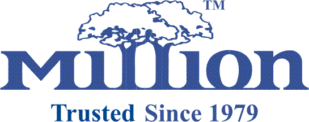3 Minutes Read
Luminous, reflective, and fluorescent signs are all types of signage that can improve visibility and safety in low light conditions. However, they are fundamentally different in terms of how they work and their intended applications.
Luminous Signs
Luminous signs, also known as photoluminescent signs, are made from materials that glow in the dark after being exposed to a light source. These signs absorb and store energy from ambient light, and when that light source is removed, they emit the stored energy, creating an afterglow that is visible in low light conditions. Luminous signs are ideal for emergency exits, stairwells, and other areas where visibility is crucial in the event of a power failure.
Reflective Signs
Reflective signs are coated with a reflective material that reflects light back to the viewer, making them visible in low light conditions. These signs work by reflecting light back to the source rather than emitting light themselves. Reflective signs are mostly used outside on highways, street signs or any other road signs to ensure maximum visibility even in low-light conditions.
Fluorescent Signs
A fluorescent sign is a type of sign that uses fluorescent pigment to create a highly visible image. These signs are made using fluorescent pigments that absorb light and emit light of a greater intensity. As a result, fluorescent signs are highly visible even in low light conditions and stand out more clearly than traditional non-luminous signs. They are best suited for indoor use, such as in retail, in industries, and offices.
In summary, while all three types of signs serve to improve visibility and safety in low light conditions, they differ in their underlying technology and intended applications. Luminous signs use phosphorescence, reflective signs reflect light back to the source, and fluorescent signs convert absorbed light into visible light, making each type better suited for different applications, industries and situations.
Read More
- Material Selection Guide for Indoor or Outdoor Signs / Displays
- Legibility Chart
- What causes discolouring in outdoor?
- Types of Double Coated Tapes and their Uses
- Difference between a Warning sign & a Danger sign
- Difference between a Mandatory sign and a Prohibited sign
- Considerations in designing an Evacuation Route in the workplace
- 7 Essential Safety Signs that every workplace should have

